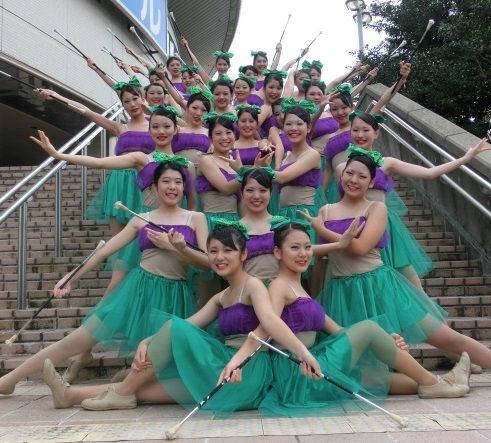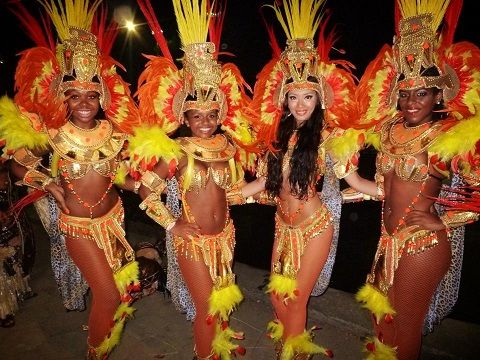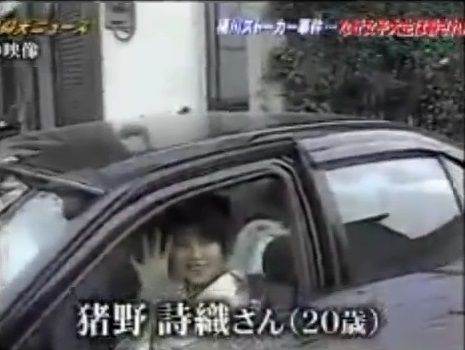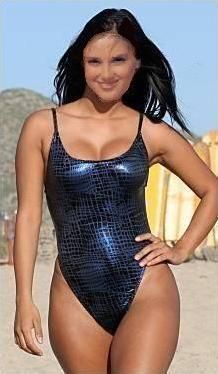Ho Chi Minh City

(jtown20.jpg)

(yubin22.jpg)

(jtown22.jpg)

(jtown24.jpg)

(sayurikumo.jpg)

Where are you?
[email protected]
May 14, 2025, 3:38 PM (14 hours ago)
Denman, are you lost in the unfamiliar streets of Ho Chi Minh City?
We agreed to meet at the park where we had lunch near the Opera House subway station at 2pm, right?
I waited until 2:50pm, but you still hadn't arrived.
I'm going back to the hotel.
Please come back as soon as possible.
What on earth are you doing?
I'm worried.
If you see this email, please reply right away.
Bye...

I'm sorry for making you worry.
[email protected]
5:12 AM (1 hour ago)
to sayuri
Last night, I was really lost.
I went to a cafe twice to use WI-FI in order to make a detailed map to the hotel.

(phuccafe10.jpg)

(phuccafe12.jpg)

(route25-05-14b.jpg)
■『Enlarge!』

(kansashotel.jpg)
I followed it on my way back to the hotel, but when I entered Japan Town, it was night.
So the scenery had changed completely and I couldn't understand what was going on.
Japan Town had really become a red-light district by 10pm.
In the alleys of the town, women dressed in sexy clothes called out to me, trying to make me their customer.
It made me think, "Am I still appealing to a woman even after middle age?" Hahahaha...

(jtown20.jpg)

(jtown25.jpg)

(jtown24.jpg)
I was confused, but it was an interesting and fun experience.
Of course, I didn't sleep with a Vietnamese woman. Hahahaha...
I really made Sayuri worry last night.
But it was such an interesting experience that I enjoy looking back on now.
I thoroughly enjoyed the night in Saigon.
When I got back and took a bath, I must have walked too much because I had blood blisters on my feet.
I walked a lot! Hahahaha...

(sayuri55.gif)
Denman... Where were you and what were you doing from 2pm until 10pm when you got back to the hotel?

You said you had some shopping to do and we went our separate ways. I was planning to return to the park where we had lunch near the Opera House subway station at 2pm...
Why didn't you come back? I got tired of waiting and assumed that you had gotten heatstroke and collapsed, and you couldn't come back, so I went to the police station...
There was no need to go that far...
But put yourself in my shoes... There was no email from you at all, and even after waiting for nearly an hour, you still didn't show up... On May 14th, the temperature in Ho Chi Minh City was 35 degrees and the humidity was 85%... I assumed that you had gotten heatstroke and collapsed...
So you went to the police station, huh?
A man near the park took me to the police after fixing my shoes and taking 500,000 VND (3,000 yen). He was a con man, but he helped me anyway. I managed to explain using a translation app on my smartphone. The person in charge called the emergency hospital. However, they said that there had never been a case of a Japanese person with a passport collapsing and being taken away in an ambulance.
I'm sorry for worrying you.
Why didn't you email me?
Well...There was no public Wi-Fi... Anyway, I tried to walk back to the park where we had lunch while looking at the map in the "Rurubu Vietnam" guidebook, but I couldn't find the way...I was tired from all the walking ... I hadn't drunk any water and I was close to getting heatstroke, so I took a nap in the shade in the front garden of the Saigon Trade Center.

(saigon-trade-center-enlarged.jpg)
■『Enlarge!』

(saigontradecenter.jpg)

Did you take a nap in the woods in front of the building because you were tired and suffering the hot weather?

No... I went into the shade of a signboard and flower bed about 10 meters from the entrance of the building, lay down directly on the tiles and took a nap. It was cool and I felt good.
But if you slept in a place like that, the security guard would wake you up, right?
Yes... I thought I was okay, but about 30 minutes later, the security guard woke me up... I had no choice but to continue my nap on a bench in a nearby park. I napped for about two hours...
But there was still time before 10pm, right? What were you doing?
I started walking towards the hotel, but I lost track of the way from Saigon Trade Center to the hotel again... It was getting darker and darker, and there was no public Wi-Fi. . I had no choice but to look for a café with Wi-Fi and went in. . . It was called CHUK TEA & COFFEE. . . I looked for the way while drinking some cold cocoa tea. . . I took a short rest and went outside, and it was already pitch black. . . 6:40pm. . .

(chuk2kansas.jpg)
■『Enlarge!』

(chucktea.jpg)

There was still plenty of time before 10pm, wasn't there? Why didn't you go straight to the hotel?

Since I'd come all the way to Ho Chi Minh City from Japan, I thought I'd explore the city at night. . . I was planning to arrive at the hotel by 8pm. . .
Did you get lost again while exploring?
It's embarrassing, but that's how it was. . . It would have been fine if the road signs were written in Vietnamese and English, but it was night and it was hard to see the road signs. . . In the end, I ended up walking along the green route, deviating from the red line on the map above. . . So, at around 9 o'clock, I went into a second cafe, made "MY MAP", and finally returned to the hotel.
I was worried all the while...
But I sent you an email, didn't I?
Yes, you sent me an email from a place called CHUK TEA & COFFEE saying you'd be back by 8 o'clock, but when it was 9pm and you still hadn't come home! I wondered if you'd been captured and killed by the Vietnamese mafia. As far as you're concerned, it seems possible, so I started to worry again...
No way... I wouldn't be killed...
Anyway, I was worried for half the day on May 14th... It was hot on May 14th, but the next day, the 15th, was hot too...
That's right... But the next day, I went to the upscale residential area of District 2 in Ho Chi Minh City and was able to relax at a cafe restaurant called "The Deck" on the banks of the Saigon River, so I felt good and reliefed after a big worry.

(thedeck10.jpg)

(thedeck12.jpg)

(thedeck15.jpg)

I was very worried about you, but I walked around District 2 in Ho Chi Minh City, and I enjoyed a stroll around the area...it was a trip full of memories.

The guidebook said it was an upscale residential area, but it wasn't that great.
But The Deck on the banks of the Saigon River was wonderful. I think it was a mansion that had been converted into a cafe and restaurant. There were many mansions nearby where French people used to live. I thoroughly enjoyed my trip to Ho Chi Minh City.
Ho Chi Minh City

(hochimin12.jpg)
Ho Chi Minh City (Vietnamese: Thanh phố Hồ Chi Minh) is located in the southern part of the Socialist Republic of Vietnam. It is the most populous city in the country and one of the world's leading cities in Southeast Asia.
The former name of the city center was Saigon.
The expression "Saigon" is still used locally in various situations, and it is more widely understood as a city name than "Ho Chi Minh City".
It is also often abbreviated to "HCMC" or "TP.HCM" among Vietnamese.
It has flourished as the economic center of Vietnam since ancient times.
It was called "Paris of the East."
It coexists with high-rise buildings built during economic growth as well as a miscellaneous motorcycle traffic jam and slums .
Ho Chi Minh City, with a registered population of 8 million, is the center of southern Vietnam and accounts for approximately half of the country's GDP.
History
Ho Chi Minh City started as a small fishing village known as Prey Nokor (Khmer for "town in the forest").
The area where the city now stands was originally a swamp, and was inhabited by Khmer people for centuries before the Vietnamese arrived in the late 16th or 17th century.
Chinese also arrived from the 17th century onwards. After the fall of the Ming Dynasty (1662), about 3,000 people and 50 ships led by its surviving retainers, Dương Ngạn Địch and Trần Thượng Xuyen, fled to the Nguyen Dynasty of Quang Nam and were allowed to settle in Bien Hoa (east of Saigon) and My Tho (at the entrance to the Mekong Delta).
In 1623, Cambodian King Chey Chetha II (reigned 1618-1628) built a tax office to accept the refugees who fled the Nguyen Dynasty of Quang Nam during the Trần-Nguyen War as permanent residents in the Prey Nokor area and allowed them to live there.
Vietnamese settlements increased rapidly, and the area slowly became Vietnamese, as the Kingdom of Cambodia, weakened by wars with Siam, could not prevent them.
Prey Nokor became known as Saigon.
In 1698, Vietnamese nobleman Nguyen Phu Khanh was sent by the head of the Nguyen clan of Hue to set up a Vietnamese administration in the area and to separate it from Cambodia, which had lost enough power to interfere in the area.
He is often credited with expanding Saigon by large-scale settlements.
A huge Vauban star fort called Thanh Gia Định was built, but it was destroyed by the French in the Battle of Chi Hoa in 1861. Ho Chi Minh City
dates its origin from that year.
The name Gia Dinh remained as Gia Dinh Province.
In 1859, it was occupied by France, and in the Treaty of Saigon in 1862, the Nguyen Dynasty recognized French control over eastern Cochinchina.
At that time, Saigon was opened to foreign trade, and developed rapidly under French Indochina, which was established in 1887.
During the French colonial occupation of Vietnam, the city was influenced by France, which is reflected in the many classical Western-style buildings in the city.
For this reason , Saigon is often called the "Pearl of the Far East" (Hon ngọc Viễn Đong) or the "Paris of the East" (Paris Phương Đong) .
In 1873, the Japanese Iwakura Mission toured Saigon, and the state of Annam at that time was recorded in the "Beio Kairan Jikki".
After World War II, on September 23, 1945, French troops occupied Saigon with the support of the British.
In 1954, however, the French were defeated by the Communist Viet Minh at the Battle of Dien Bien Phu and retreated from Indochina.
Saigon was then returned to the control of the government organized by Emperor Bao Dai, who established it as the capital in 1950.
At that time, Saigon and the Chinese-Vietnamese area of Cholon (Chợ Lớn) were combined into one administrative unit, called Saigon (Vietnamese: Đo Thanh Sai Gon). When
Vietnam was officially divided into North Vietnam (Democratic Republic of Vietnam) and South Vietnam (Republic of Vietnam) by the Geneva Accords in 1954.
The South Vietnamese government, under the influence of the United States and led by President Ngo Dinh Diem, continued to maintain its capital in Saigon.
After that, the fighting between the South Vietnamese Army and the North Vietnamese Army expanded from the border area, and in 1960, President John F. Kennedy of the United States, who supported the South Vietnamese government, sent a large number of US military advisory forces.
After that, in 1965, the Vietnam War began in earnest with the full participation of the US regular army, and a large amount of US military supplies and funds flowed into Saigon and other parts of South Vietnam, but the National Liberation Front of South Vietnam became active in terrorism targeting civilians.
After the Paris Agreement was signed in 1973, the Republic of Vietnam gradually fell into a disadvantageous position after the complete withdrawal of US troops, and on April 30, 1975, the North Vietnamese Army advanced into Saigon, the South Vietnamese government collapsed, and the Vietnam War ended.
This event is generally called the "Fall of Saigon" in the United States and the "Liberation of Saigon" in Vietnam.
After that, Saigon and other parts of South Vietnam were under the control of the People's Army of Vietnam, and when it became socialist, economic activity stagnated, and refugees flowed out, mainly from overseas Chinese who disliked this.
In 1976, with the establishment of the Socialist Republic of Vietnam, a unified communist state, the city of Saigon (including Cholon), Gia Dinh Province, and two suburban districts in two neighboring provinces were integrated to form Ho Chi Minh City, named after the future communist leader Ho Chi Minh. At that time, the name "Gia Dinh" disappeared.
Even today, the city center is lined with wide, elegant tree-lined avenues and historic French colonial-style buildings, adding color to the streetscape.
The most prominent buildings in the city centre are the Reunification Palace (Dinh Thống Nhất), the Municipal People's Committee (City Hall), the Municipal Theatre (Nha hat thanh phố), the Central Post Office (Bưu điện thanh phố), the Revolutionary Museum (Bảo tang Cach mạng), the National Bank Branch (Ngan hang Nha nước), the Municipal People's Court (Toa an Nhan dan Thanh phố) and the Notre Dame Cathedral (Nha thờ Đức Ba).
Ho Chi Minh City is home to a strong ethnic Chinese presence in Vietnam.
Cholon, now part of Districts 6, 10 and 11, and the area known as District 5, is the Chinatown.
Prior to 1975, there were 1.2 million ethnic Chinese living in Southern Vietnam, of which 1.1 million were in Saigon, and 700,000 of those in Cholon.
On the eve of the Sino-Vietnamese War, a large number of ethnic Chinese left the country as refugees, causing the ethnic Chinese population in Cholon to fall to 100,000 by 1978.
The ethnic Chinese population in Vietnam fell from 1.45 million in 1975 to 280,000 in 1987.
As the Doi Moi policy progressed, more ethnic Chinese returned to their home countries, and Cholon's ethnic Chinese population recovered to over 500,000.
With a population of over 7 million (registered residents and commuters from outside the city), Ho Chi Minh City is in urgent need of public infrastructure.
To meet this need, the city authorities and the central government have begun efforts to develop a new urban center.
The two most prominent projects are the downtown area of Thủ Thiem in District 2 and the new urban area of Phu Mỹ Hưng in District 7 (part of the Saigon South Project), which are home to various international schools such as the Japanese School, Saigon South International School (an American school), the Royal Melbourne Institute of Technology in Australia, a Taiwanese school and a Korean school.
Climate
Ho Chi Minh City has a tropical (savanna) climate with an average humidity of 75%.
The year is divided into two seasons. The rainy season, which averages about 1800 mm of precipitation each year (about 100 rainy days per year), usually starts in May and ends in late November.
The dry season lasts from December to April.
The average temperature is 28°C, with a maximum of 39°C at noon in late April, and a minimum of below 16°C in the early hours of late December.
Tan Son Nhat International Airport
Tan Son Nhat International Airport is a civilian-military airport located 7 km north of downtown Ho Chi Minh City (Saigon).
Taxis and buses are available to travel between the airport and the city.
Due to the rapid increase in air passenger numbers and the proximity of Tan Son Nhat International Airport to the city center, the Vietnamese government is already preparing to build a new "Long Thanh International Airport" 50 km northeast near Long Thanh Village, Dong Nai Province.
Construction is scheduled to begin in January 2021 and open in 2025.
Buses
Since buses are the only public transportation, a network of bus routes is spread throughout the city.
Many buses are equipped with air conditioning.
Most of the 10,000 taxis in the country are equipped with meters and generally operate normally, but not many drivers speak English well, and some refuse to use the meters in order to collect fraudulent fares or give false change.
In Ho Chi Minh City, there are many motorbike taxis called "xeoms" that carry passengers on the back of a motorbike.
Tourists should be cautious when using xeoms or three-wheeled bicycle taxis (cyclos), as drivers may not pay attention to passenger safety.
The major taxi groups, white Vinasun and green Mailinh, are considered relatively safe.
Uber-type ride-hailing apps are also available, and Grab is available.
As of February 2020, the estimated fare is 100,000 VND for a 7 km trip.
Cuisine
In addition to southern Vietnamese cuisine, there are restaurants serving cuisines from all over Vietnam, as well as non-local cuisines, from French cuisine and Japanese sushi to fast food such as Texas barbecue and KFC.
In recent years, many food courts have opened in large shopping malls in the city center.
Internet environment
Ho Chi Minh City has more than 1.2 million landlines and about 3 million mobile phones (the latter showing an annual growth of 20%).
The Internet, especially ADSL connections, is spreading rapidly, with over 800,000 subscribers and over 3 million frequent users.
Among the Internet providers, VNPT, Viettel, and FPT are the three most popular, accounting for 98% of the Internet subscribers in Vietnam.
To connect to the Internet from their smartphones, foreign tourists can either connect to local Wi-Fi or purchase a SIM card and insert it into their smartphone.
Wi-Fi environment
With the recent spread of smartphones, free Wi-Fi is available at hotels, restaurants, cafes, etc.
Some chain stores, such as Starbucks, have introduced a system to deal with customers who stay for a long time, where one password is only valid for one hour and the connection is blocked after that.
Source: "Ho Chi Minh City"
from Wikipedia, the free encyclopedia

I 'm sure you enjoyed your trip, too, Denman.

I'm sorry for worrying you, Sayuri, but thanks to you, I was able to enjoy my trip to Ho Chi Minh City. By the way, have you ever heard of "Miss Saigon"?
Is it the woman who won Miss Universe?
No... It's the title of a musical.

(miss-saigon2.jpg)
Miss Saigon
Miss Saigon is a musical with a script by Claude-Michel Schönberg and Alain Boublil and lyrics by Boublil and Richard Moritoby Jr.
Based on Giacomo Puccini's opera Madame Butterfly, it depicts the fateful romance between an American soldier and an Asian woman .
Instead of an American naval officer and a fallen samurai's daughter from Madame Butterfly, it depicts the tragic love story between Kim, a Vietnamese girl working in a brothel in Saigon in the 1970s at the end of the Vietnam War, and Chris, a military driver for the US Embassy.
It premiered in London's West End on September 20, 1989, and closed on October 30, 1999 after more than 4,000 performances.
It also opened on Broadway in 1991, and has since toured in many cities.
Before the 2014 London revival, the opening day box office gross exceeded £4m, a world record.
It was Schoenberg and Boublil's second big hit after Les Miserables in 1985.
As of September 2015, it is the 13th longest-running Broadway production of all time.
Background
It is said that the playwright Claude-Michel Schoenberg was inspired by a magazine photo he happened to see of a Vietnamese mother sending her child from Tan Son Nhat Air Base to America, where his father, a former GI (American soldier), was waiting, in order to give him a better life.
Schoenberg considered the mother's actions a "noble sacrifice" and decided to make it the central theme of Miss Saigon.
The story is based on the Italian opera Madame Butterfly by Giacomo Puccini and the French novel Madame Chrysantheme by Pierre Loti, which inspired the opera .
The highlight of the film is when the last Americans in Saigon leave by helicopter from the roof of the embassy, leaving the Vietnamese behind to cry out in despair.
Critics:
The show won numerous awards and accolades in London in 1989, but missed out on the Laurence Olivier Award for Best Musical.
Since its Broadway debut in 1991, it has been called the best musical ever, both critically and commercially.
It broke many Broadway records, grossing $24 million, costing $100 a ticket, and running for 39 weeks in a row.
At the Tony Awards that same year, Miss Saigon and The Will Rogers Follies were each nominated for 11 awards.
The New York Times wrote, "The Will Rogers Follies and Miss Saigon are the front-runners for best musical, but the London musical is expected to lose. But British actor Price and Filipina actress Salonga are so good on Broadway that the battle between the two could be long."
The Will Rogers Follies won most awards, but Salonga won Best Actress in a Leading Role in a Musical, Price won Best Actor in a Leading Role in a Musical, and Battle won Best Supporting Actor in a Musical.
Source: "Miss Saigon"
from Wikipedia, the free encyclopedia

Why does this musical attract you, Kato?

This musical is so popular that it was the 13th longest-running musical of all time on Broadway, and it was also made into a movie. . . I'm interested in this musical because it replaces the American naval officer and the daughter of a fallen samurai in "Madame Butterfly" and depicts the tragic love story between Kim, a Vietnamese girl working in a brothel in Saigon in the final days of the Vietnam War in the 1970s, and Chris, a military driver at the US Embassy. . .
Kato, are you saying that Ho Chi Minh City (formerly Saigon) and Nagasaki, the setting of "Madame Butterfly", are connected?
Yes, that's it.
So that's the reason you choose Ho Chi Minh City instead of Hanoi, huh?
Yes, that's right.

(foolw.gif)
























































